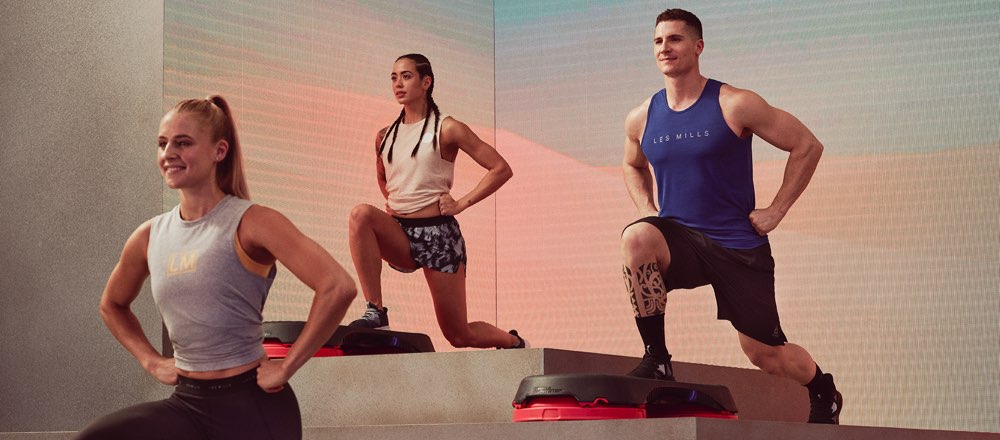
“Progress is impossible without change; and those who cannot change their minds cannot change anything.”
So said famous Irish playwright George Bernard Shaw – words more apt today than ever.
As fitness operators prepare to ramp up their recovery in 2022, what changes will be required for the industry to progress?
With health now a top priority for everyone, and the latest Google data showing search-indicated demand for gym memberships is at sustained all-time-highs, there’s a growing sense of optimism that 2022 represents an opportunity for clubs to take substantial strides forward.
For legendary club manager and author Herb Lipsman, the biggest opportunity for operators in 2022 is to break out and reach ‘the 80%’ – the majority of consumers who don’t currently engage with gyms.
“The pandemic has brought our health into sharp focus and people are beginning to realize that it’s their own responsibility to stay healthy, so now it’s up to us to break out of our small segment and make the quantum leap into mainstream adoption,” says Lipsman.
“We’ve been talking about this for years, so it’s going to take a completely fresh and innovative approach to truly make headway.”
So how far is the health club industry from evolving into a mass mainstream movement? How much longer will it be before the ‘big, bad, scary gym’, as it was once considered by many people, becomes widely known as that space everyone visits twice a week as part of a holistic health regimen?
Crossing the chasm
According to renowned author and business consultant Simon Sinek, we might be a lot closer than we think.
In his famous TED talk, How great leaders inspire action, Sinek discusses the Law of Diffusion of Innovation and cites 15-18 per cent penetration as the tipping point that must be reached to achieve mass market success and acceptance of an idea.
By ‘crossing this chasm’ as Sinek puts it, you reach a large enough number of people that the majority of the population are then ready to follow suit and fully embrace your services.
Assuming he’s right, our sector’s current penetration rate – which ranges from around 6 per cent in the Middle East to roughly 21 per cent in the US – puts it within touching distance of mass adoption.
So, what can clubs – and the wider industry – do to make a decisive leap past that magic 18 per cent mark?

Mapping the new market
Considering the macro-environmental factors shaping our market and the lives of our target audience is an important part of the planning process.
The pandemic has prompted consumers to prioritize their health, with 50% focusing more on their wellbeing, according to the 2021 Global Fitness Report. Some 82% of consumers regularly exercise (or soon plan to), while 75% of this group do gym-type activities, making fitness the world’s biggest sport.
This presents latent growth opportunities for fitness providers as COVID restrictions recede and clubs return to full capacity. The key is identifying the groups your club is best-placed to target.
For example, the pandemic has spawned a new generation of rookie fitness fans who have taken tentative first steps into fitness and are now deciding what comes next, with 27% of regular exercisers describing themselves as ‘absolute beginners’.
Opportunities abound for operators who can appeal to these groups and understand what they want from a fitness experience, as well as the unique barriers to exercise they face.
Although 81% of beginners are interested in group activities, 66% say they currently prefer to exercise alone, suggesting a confidence gap that needs to be bridged before beginners feel fully comfortable. There’s a major role for our Instructors and wider staff to play in ensuring they feel welcome, while helping beginners find intrinsic motivation to exercise is essential for their long-term adherence.
Doubling down on digital
Another legacy of the pandemic has been the explosion of digital fitness options and their increasing adoption by consumers. This again represents a golden opportunity for operators; the ability to reach beyond your existing membership and attract fresh faces into facilities will be key to long-term growth.
Consider how your digital offerings can drive new leads and prospects in the bustling beginner segment by bringing your authentic club experience into the homes of groups who wouldn’t typically visit your club. This will help them build their fitness skills and confidence at home, starting a journey that sees them ‘graduate’ into your facility over time.
This also applies to maintaining your current member base. We’ve entered the age of omnichannel fitness, with 80% of members planning to continue using digital workouts post-pandemic. Apple, Google and Amazon are making digital fitness moves, but clubs remain uniquely placed to meet consumer demand for a 60:40 blend between live and digital workouts. Combining thrilling live workouts in the club with high-class digital options to provide a truly omnichannel offering can give operators the edge over digital-only rivals, keeping current members loyal and posing an attractive proposition to fitness beginners.
For Kevin McHugh, COO of The Atlantic Club in New Jersey, US, staying open to new ways of thinking and treating technology as a friend rather than foe is key to driving club growth.
“Ourselves and other leading clubs must continue to do a better job maximizing the live in-club experience – which is our USP – as well as providing an outstanding range of digital options for when members can’t make it to the club and educating on how to get the most out of them,” he says.
“One of the most important strategies that health, fitness, and wellness clubs need to employ is to expand their reach beyond the traditional bricks and mortar to provide members with a total wellness solution. The leading health and fitness clubs of the future will provide a full omnichannel solution to members.”

Plugging the leaks
Of course, it’s no good investing time and effort into winning new members, only to lose them soon after. Too often, clubs focus on the sale and then assume the member will be fine left to their own devices. But with roughly 50% of members leaving their club each year, clearly this isn’t the case. How you onboard a new member is absolutely crucial to the long-term success of not only that member, but also your club.
According to Ish Cheyne – Head of Fitness at the 12-strong Les Mills New Zealand (LMNZ) chain of clubs, where group fitness typically accounts for 50% of overall gym attendances – starting a member’s journey on a positive note is vital, and helping them build social connections is the easiest way to achieve this.
“Nobody ever left a gym because they had too many friends,” says Ish. “So whether it’s allowing new members to bring a friend for free for a week, encouraging people to join as a group, or steering new members towards the ready-made community of the group exercise studio, do everything you can to help members develop friendships within the club.”
“This not only makes the experience more fun – and therefore something they’re more likely to repeat – but it also creates multiple points of contact for them in the club, meaning they’ll be missed if they don’t attend.”
Vaccinate against inactivity?
The above tactics are all well and good for the people already interested, or at least curious, about investing in their fitness. What about the billions of people who emphatically aren’t?
Another hallmark of the pandemic – and the biggest reason we still have a club industry to speak of – has been the mass rollout of vaccines to billions of people across the planet. Offers of gold jewelry, cash, ice cream and even free beer are just some of the ways authorities have been encouraging people to get their Covid jabs.
Research on other vaccines shows that financial incentives increase people’s adherence to a vaccine regime seven-fold. So are there lessons here that we can apply to drive mass adoption of exercise?
Incentivizing physical activity is not a new concept. Way back in 2008, studies were concluding that financial incentives, even relatively small incentives, can influence individuals' health-related behaviors. More recently, researchers identified the benefits of incentivization by using data from 422,643 members of the Vitality Active Rewards program. The study showed that, though unhealthy individuals are much less likely to take up an incentive of this nature, when they do, it drives a more significant behavior change than seen in more active individuals.
Whichever methods you use, what we’ve seen from the global vaccination rollout has been that where there’s a will, there’s a way. Its success has been underpinned by global health agencies and governments, who have committed substantial resources and support to reduce the number of deaths, illness and economic disruption caused by COVID-19. There are significant parallels with another pandemic of our time: physical inactivity.
Globally, one in four adults are insufficiently active, posing a 20 to 30 percent increased risk of death compared to people who are active. The World Health Organization says up to 5 million deaths a year could be averted if the global population was more active. So how can we persuade governments to place equal emphasis on helping people to be more active and preemptively boost their immunity?
Cross-sector collaboration
There’s undoubtedly a long way to go, but we’re definitely making progress. One of the brightest spots of the pandemic has been the growing sense of importance that governments – and society in general – have attached to health and fitness. Far from being treated as a niche segment of the leisure industry, clubs have been increasingly recognized as the backbone of communities, playing a vital role in supporting physical and mental health.

Strong lobbying efforts from the likes of IHRSA and EuropeActive – working closely with clubs and Instructors – have resulted in several policy wins for the sector, including lockdown exemptions for clubs in several countries. Eager to build on this momentum, the Global Health & Fitness Alliance (GHFA) was launched in November 2020 with the aim of embedding physical activity into global health policy and championing the role of fitness facilities as frontline delivery partners.
“As governments around the world have been making huge decisions on how to promote healthy living and safeguard certain sections of the economy during the pandemic, there’s been a growing sense among fitness operators and suppliers of just how important it is to ‘have a seat at the table’ when these important decisions are being made,” notes GHFA Co-founder Kilian Fisher.
“The purpose of the GHFA is to create one collective voice for our industry that can have an impact on the world stage and ensure physical activity is a cornerstone of global health policy.”
Key to achieving this, adds Fisher, will be demonstrating the central role fitness facilities can play in delivering physical activity to the whole population, which means broadening their appeal and becoming more inclusive.
Expanding our reach
The challenge for operators is to show how their services can contribute not just to people’s physical health, but their mental and spiritual health as well, in helping to tackle conditions that affect large sections of the population. This opens up exciting opportunities for how clubs can adapt their marketing to target different audiences. For example, a recent study showed that taking part in regular BODYBALANCE™ classes can help increase sleep quality, reduce anxiety and increase confidence. How many people can you think of who would be intrigued by the offer of less stress and a better night’s sleep?
“We’re coming off the back of the biggest pandemic in a century and health is now everyone’s top priority, so I think there are huge opportunities for clubs to play a more prominent role in getting people healthy and fit,” says Eddie Tock, CEO of REX Roundtables.
“The key will be to make club activities more accessible, by offering more outdoor and digital workouts, as well as acknowledging that people will want to work out in lots of different ways.
“We also need to look at how we market ourselves through the lens of behavior modification, emphasizing the endless benefits brought by the miracle cure of exercise, whether that’s reduced risk of cancers, better mental health, or alleviating back pain. Big Pharma hates fitness because our product provides the benefits of their most lucrative drugs, with none of the side effects.”
For Herb Lipsman, the ability to support the mental and emotional wellbeing of members and prospective members will be a key point of difference between the most successful club operators and the rest of the field over the next decade and beyond.
Citing the slew of high-profile clubs he’s managed as an example, Lipsman believes there are several effective tactics operators can employ immediately to broaden their reach.
“You need to find creative ways to get people through the door that don’t necessarily pertain to fitness in the first instance,” he says.
“Whether that’s free seminars for the public on how to lead a healthier life, eat and sleep better, or personal consultations, our teams have a wealth of knowledge that we can leverage to attract fresh faces through our doors. Sometimes you just need to give a little something free up front to kickstart the conversation. ‘Speculate to accumulate’ is an underrated strategy!”
Seize the moment
Whichever tactics prove most effective in reaching greater audiences, it will take sustained effort and collaboration across a number of fields to truly move the dial.
But the real question won’t be ‘how can we cross the chasm and edge past 18 per cent penetration?’ It will be ‘how can we use this small but significant step as a springboard towards major mass-market adoption?’ – because that’s where the real prize awaits. And the arrival of 2022 – with a unique set of circumstances steering people towards physical activity – presents a major opportunity to seize the moment and take decisive strides forward.
THE GAME HAS CHANGED AND SO HAVE THE RULES
Learn the new rules of fitness and how your club can win with the 2021 Global Fitness Report.
DOWNLOAD THE FINDINGS